This is the slogan on the side of a bus stop shelter on the road from Cwm y Glo to Llanrug, four miles outside Caernarfon. One is used to seeing ‘Cofiwch Dryweryn’, but this is a new twist. I do not know who the artist is, but they’ve chosen the same colour – red text on a white background. Many have learned the story of Tryweryn recently through the slogan. Epynt might well reach others in the same way. We could have one every year – teaching the story of Welsh history via murals. In the absence of Welsh history being taught in schools, it could be an option. Learning the story of Epynt in 2020 is vital as 80 years have passed since the Clearing. But where is Epynt, and what happened there in 1940?
The community on Epynt mountain was a Welsh-speaking one in a rural, unpopulated area. Note the tense – it is not in the present. Its remains can be ‘seen’ between Builth Wells and Llanwrtyd in the north, Brecon and Sennybridge to the south. Not that you can go and visit the place, it’s the property of the MOD by now. And that is the crux of the matter.
It was Liverpool Corporation’s need for water that was the excuse for drowning the village of Capel Celyn. It’s the MOD’s need for target practice that was the excuse for destroying the Epynt community. There’s never a lack of excuses. And we’re not talking of a handful of cottages. Over two hundred people from 54 farms and houses were sent away, with little notice, so that the army could practice. Today, the MOD owns 30,000 acres there. Read Herbert Hughes’ comprehensive account, ‘Mae’n ddiwedd byd yma… (Gomer 1997) if you want the full story. In English, there’s a book that was written in 1971 ‘Epynt Without People’, by Ronald Davies.
What Herbert Hughes has done between two covers is look at the community that has lived in Epynt since the Bronze Age. It is mostly sheep grazing land, and horses. Indeed, in Welsh, that’s the meaning of Epynt, the paths of ‘ebolion’, colts. There is a reference to it in the Book of Llandaf (circa 1135) and it mentions several hills: Bryn Bugeiliaid, Crug Hisbren, Carn Echan. Yes, there is a certain magic in the names.
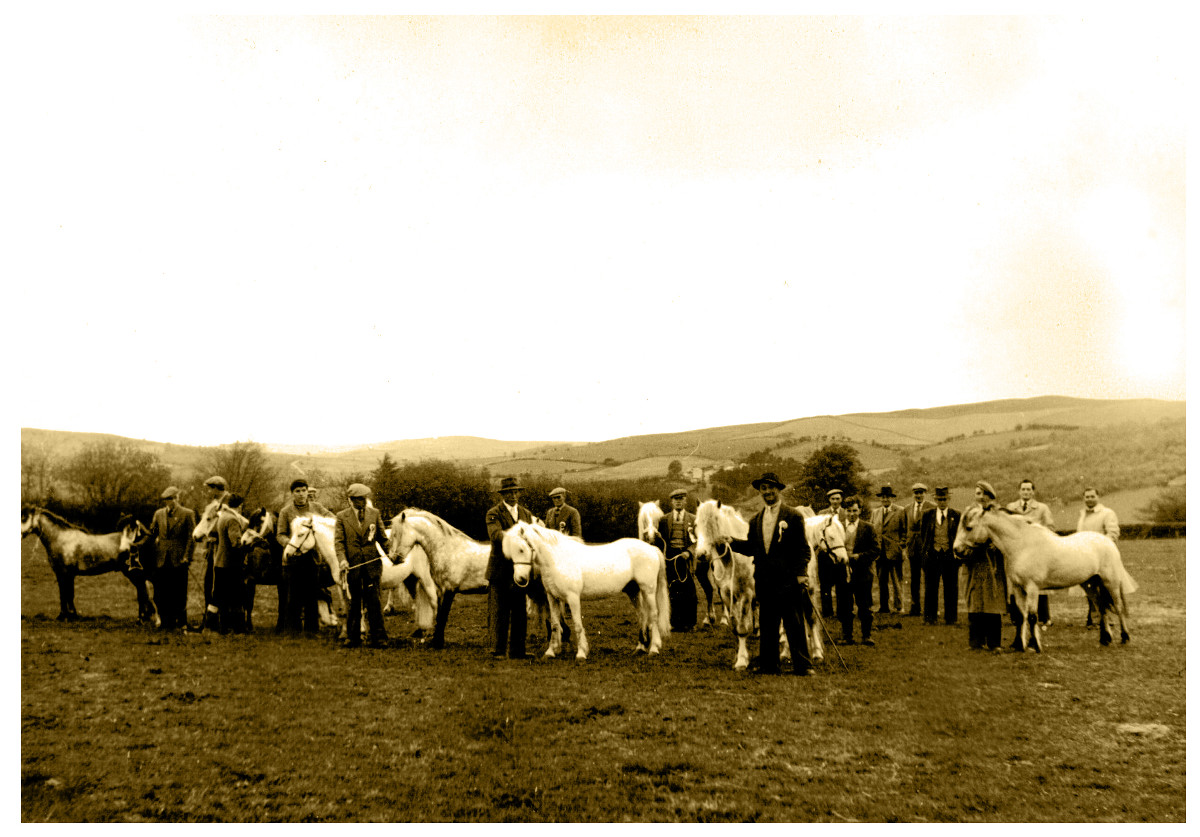
Thankfully, the memories of some of the inhabitants have been chronicled in the Sain Ffagan Museum as well. This community has their fair share of famous people as well – Cefn Brith was the home of John Penry, and it was here that our most famous hymn writer, William Williams Pantycelyn lived.
How did such a tragedy occur? The cause was the Second World War. Shortly after the war began, the army saw its chance.
Ronald Davies was a child at the time. When on his bike, he noticed a khaki-coloured Hillman Minx approaching on the road and he followed it. An army captain was travelling in the car, and he was going around explaining to some of the farmers that the War Department intended to take control of the land to use it as a Shooting Range (Maes Tanio). The inhabitants were told that they were due to evacuate by the end of April 1940. It was, naturally, a complete shock to the people, especially the elderly ones, many of whom had lived in the same houses all their lives.
Some felt that this would only be for the short term, and that the war itself would be over in six months. One of them was Thomas Morgan, Glan-dŵr. Although he did move away, Thomas would visit his farm regularly, lighting a fire to ensure that the place would not get damp. The army noticed this, and destroyed the farm. Thomas was told that the farm had been blown up and there was no need for him to return there. Gradually, the sad truth dawned on the community.
Plaid Cymru were the only ones to attempt to prevent the plan, and Gwynfor Evans and J E Jones were busy visiting the homes and holding public meetings. They managed to set up a committee and a deputation, but nothing came of it. The army was determined to keep to its plan, and it later transpired that they had their eye on the area since 1912. Because of the peaty nature of the land, Epynt was ideal as a shooting area. The timing went against the campaigners as well. Gwynfor was optimistic that they would win and keep Epynt, but the government made its final decision on the day that Hitler chose to invade Norway. As J E Daniel said, “Wales was more helpless in front of England’s War Office than Finland was facing Russia.”
And we can study the statistics: for military use, the War Office had occupied 56,700 acres in England; 35,000 acres in Wales and 6,000 in Scotland. If you add Epynt to Wales’ figure, the total is 70,000 acres.
Wales was being exploited – once more.
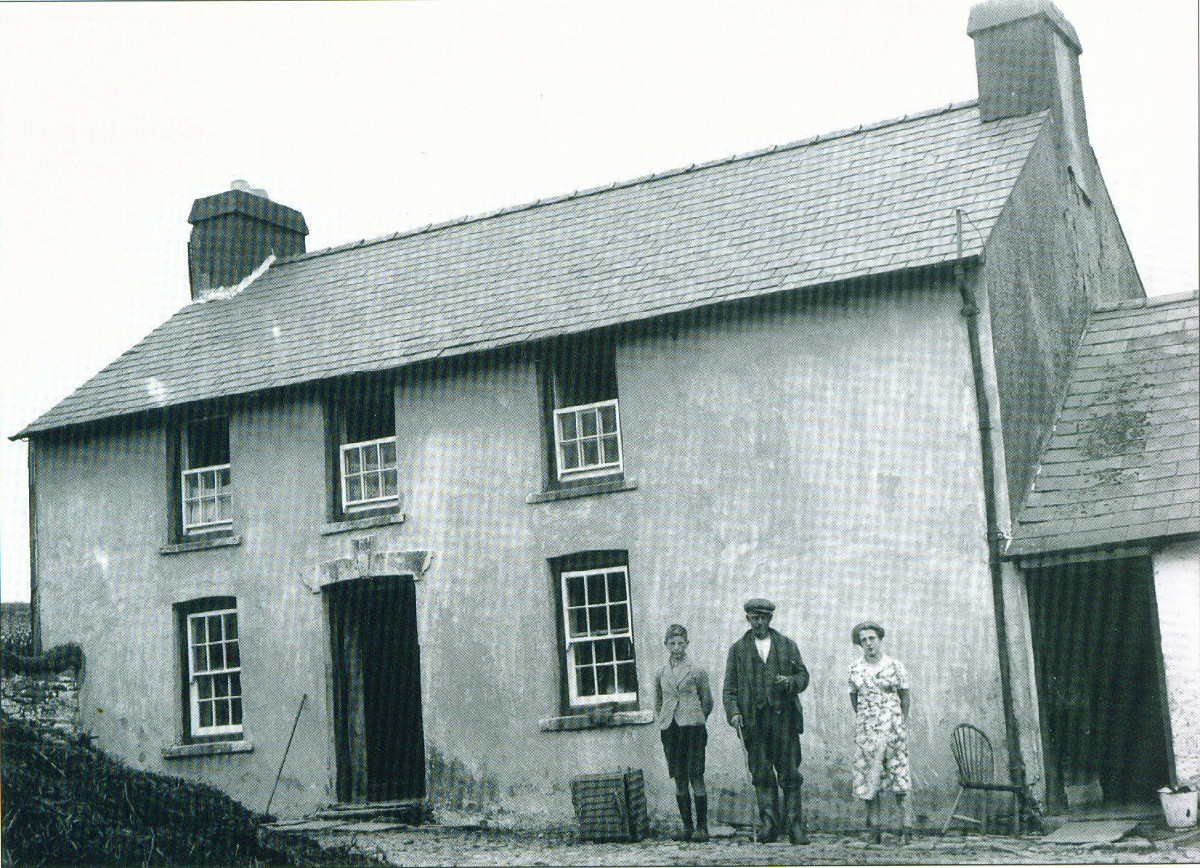
Six months after the rumours first arose, the people were leaving their homes, never to return. Iorwerth Peate from Sain Ffagan went to photograph the residents being evacuated, and came across a 82 year old woman sitting on a chair in a farmyard at Waun Lwyd. It was there that she was born, in 1858, as well as her father and her grandfather before her. She turned to Iorwerth Peate and told him, “Young man, go back as soon as you can, it’s the end of the world here.”
Yes, it is a sad story, and it is sadder still because it is not taught in the schools of Wales. Eighty years after the Second World War, the army still owns Epynt as it owns so many other areas in Wales.
This year, we must spread the word, as the history was taught about Tryweryn in 2019. On September 19th, there was a rally due to be held at Epynt, but the virus has put a stop to that. There has, however, been an online campaign to educate the public, both on Facebook and on Cymdeithas y Cymod’s Twitter feed, and the names will be remembered – Hirllwyn, Bryn-melyn, Llwyn-coll, Gilfach-yr-haidd, Neuadd Fach, Croffte, Cwm-nant-y-moch, Llwynteg-isaf, Cefnbryn-Isaf, Gelli-gaeth, Cefnbryn-uchaf, Lanfraith and Gythane.
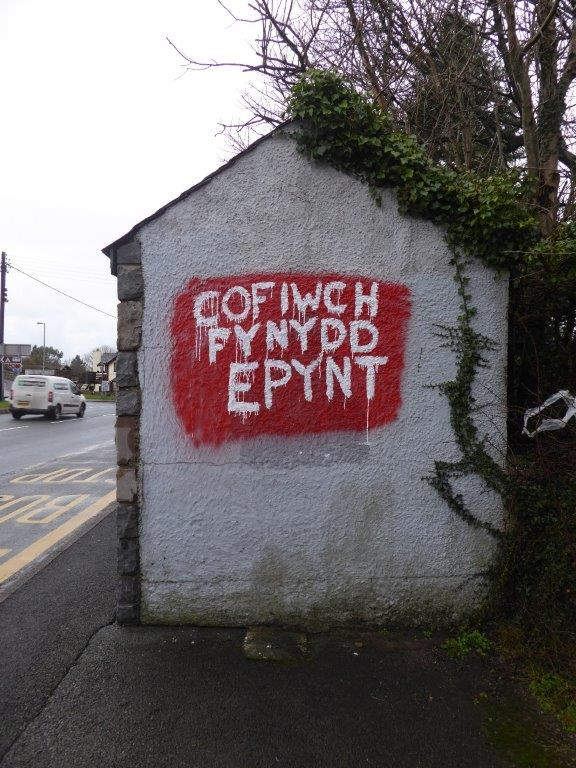
Indeed, the Epynt Memories Facebook page has grown enormously since its inception at the end of March this year, with nearly 700 followers. The unexpected contributions have been those from non-Welsh speakers who keep the memory alive, even if they have not acquired the language. Messages such as ‘Cefnioli is the farm of Dadcu and Mamgu Morgan’, or ‘John was Grampa Nantgwyn’s oldest brother’. Is this strange? The houses are no longer there, the community is no longer there, the language is no longer there, yet – 80 years later, people are debating this on social media in the midst of a pandemic.
Does Epynt therefore have a place in the context of Wales’ next step?
I would suggest so. The removal of the Colston statue in Bristol and the ensuing events have prompted a fascinating discussion about what should be commemorated and how it should be commemorated. The memorials of any country reveal a great deal about the history of that country. Similarly, those parts of our history that go unrecorded speak even greater volumes. It is part of the dialectic, it is an ongoing discussion.
As I have said before, Tryweryn has established itself in the history of Wales, Epynt has not. Is it because Tryweryn is safer to discuss than Epynt? Capel Celyn is permanently under the water. We can discuss the value of an apology from the City of Liverpool for what happened, but the situation cannot be changed.
In Epynt, the land is still there. When the army took 30,000 acres in 1940 to convert it into a firing range, there was a suggestion that the land would be returned once the war was over. 75 years have passed since the end of World War II. Not only is Epynt still in the hands of the army, they have taken more land since. Is it not high time that the army left Epynt? In the current climate, is a firing range not outdated as a method of war? Rhodri Glyn Thomas’s recent argument is that the British government has spent billions of pounds annually on a nuclear deterrent rather than on a cyber attack. That money should have gone towards the preparations for a pandemic. If nuclear weapons are no longer relevant, what about a firing range?
Another question regarding Epynt is whether we are happy for Welsh land to be used for the practice of killing? In this sense, too, it differs from Tryweryn. Epynt is not a closed range, but a place where explosions are constantly heard. The words on the map read ‘Danger Area’. It is a danger to outsiders, but it is also – as we well know – life-threatening for the soldiers who practise daily on Epynt. And after the soldiers perfect their craft there, they are clearly a threat to the lives of citizens in Afghanistan or other countries in the Middle East.
The discussion for Wales’ next step is not just how to remember the Epynt dispersal, but how to approach Epynt today. What should really be done with the place? It is said that the army now has a decent relationship with local people. It is said that people prefer to see the army in possession of Epynt than the Forestry Commission. But is it a choice between two evils? Given the choice, what would the people of Brycheiniog like to see on Epynt today? The right to choose is the fundamental issue. To discuss this, the same question applies to the people of Fali on Anglesey, to the people of Llanbedr in Meirionnydd, to the people of Aberporth in Ceredigion, and to the people of Castle Martin in Pembrokeshire (not to mention the latest discussion about the military museum in Cardiff Bay). At each of these sites there will be a debate around employment, which must be addressed. But is there no alternative employment in Wales other than that of the slaughter industry?
While we conduct this discussion, we can actively pursue the creation of learning material on Epynt. Too often the response we get is ‘I don’t know about this’. It was true in my case personally. While I was taught about every stage of the Second World War in a standard O Level course for two years, I was never taught about Epynt. It would have been an engrossing debate on the classroom floor – during the desperate period of the threat of war, was it fair to drive two hundred people from their houses to make room for a firing range? After the war, was it fair that the army held its grip on 30,000 acres?
It is the difference between the two periods that is striking. Since 1940, it is the sound of bombs that is to be heard on Epynt. It is a vacant land, with no homes or people. For a thousand years before 1940, there was a community there, people worshipped together, lived together, preserved the land, and sustained culture. Which of these is the most civilised?
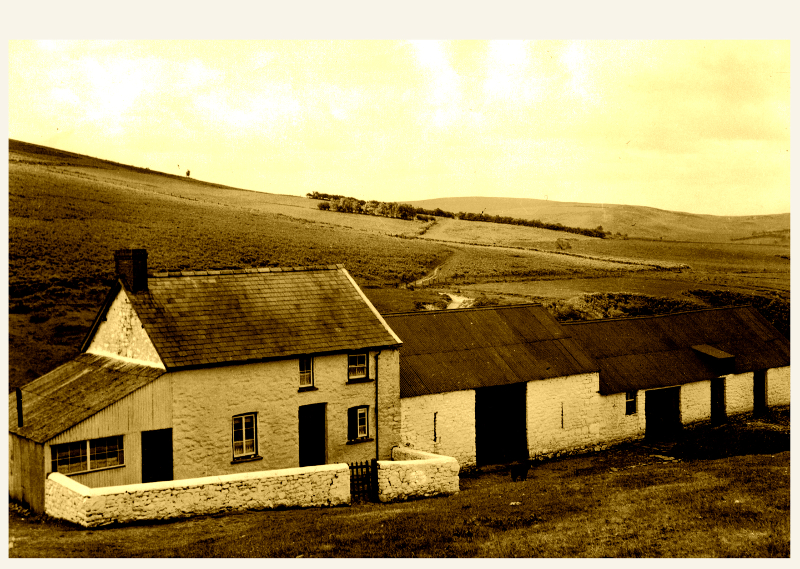
Not that everything was Eden-like in Epynt before 1940. One of the saddest episodes occurred nearly a hundred years ago in 1923. The people of Plas Glan-Bran used to go hunting, and Epynt shepherds would earn a lot of money from collecting the birds after they had been hunted. One day, the husband of Gwybedog was shot by accident. A doctor came from Llanidloes, and he was operated on, on the kitchen table, without any painkillers. The bullet from his body was successfully removed. But the trauma must be too much for him, as he died four days later. He was the father of seven children, and the seventh was not yet born. When he was born, he was christened Iorwerth, and lived in Gwybedog until 1940. He faced his own trauma that year.
There was therefore injustice on the land before 1940. What sense was there that ordinary people were collecting dead birds for the aristocrats? What sense was there in forcing people out of their homes so that others could learn to kill? The words of Iorwerth Davies have stuck in my mind. He was seventeen-year-old leaving Epynt. But the distress deepened as he got older. In aging, he increasingly realised the magnitude of the loss.
The daughter and granddaughter of Iorwerth look after the Facebook page these days, tending the memories. In the old days, if a family was in trouble on Epynt, they would put a white sheet on a thicket to signal to others, and neighbours would come along to help. I see the Epynt Memories page as a modern version of the white sheet. One very important thing we can do is to help spread the message, tell the story, and discuss what future we would like to see for Epynt.

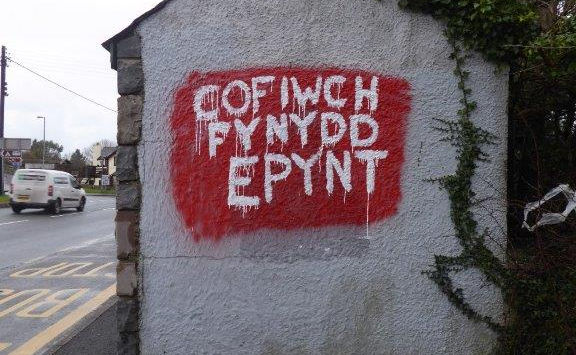
I remember some of the people of the Epynt . They were my family. The nearest I can describe it when they gathered was a collective unspoken feeling. How do I describe that? Have you ever been to a large family funeral where the family have a shared feeling and experience but have no need to talk about it. It just binds and holds them together. I think that is the nearest I can describe. It is the only comparison that I can make.
They always went ‘up the hill’ and never referred to it as a mountain and always said ‘The Epynt .
Wales did not – and could not have remained neutral in WW2. Despite the decision of Plaid Cymru’s leadership to declare themselves as such. At the time Europe was being engulfed in a campaign of blitzkrieg by the forces of fascism. Sacrifices were required. My father was trained on tanks for Normandy at beautiful Lulworth in Dorset on land seized by the War Dept – and still held by them. These areas should have been returned after the war – as happened at Penyberth subsequently. Let us remember the sufferings of the occupied countries particularly when considering our losses. Our own were painful but smaller in scale.My great uncle died in the navy in the course of the war. Having said all this, the sadness of crossing Epynt – where one of my relatives would have had taken services – is still deep. I am not sure if the term just war applies. But it was definitely, unfortunately, a neccessary one.
Definitely a sad thing to have happened but the war sealed the fate of Epynt. On the brighter side it is still grazed with 90 odd graziers still keeping stock on the hill. Not sure Cwm Nant y Moch was taken, the farm is outside the boundary and the farms acquired at a later date were willingly sold to the MOD so there should be no complaint there. Another plus is the minimal use of agricultural chemicals which has preserved a rich and diverse landscape. It’s not all doom and gloom, I’m sure there would still be reason to complain about something even if the takeover never happened!